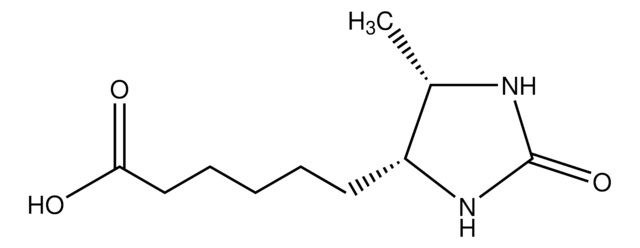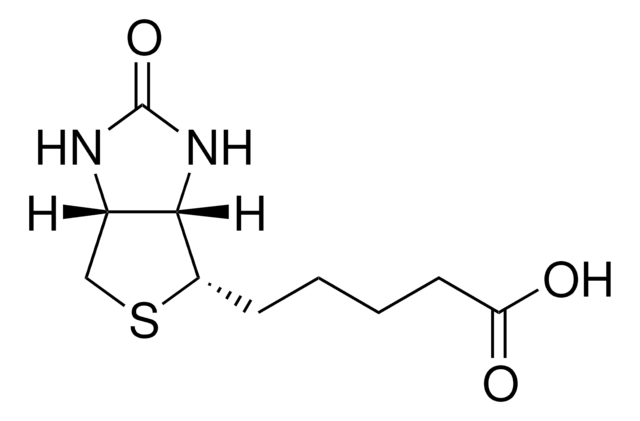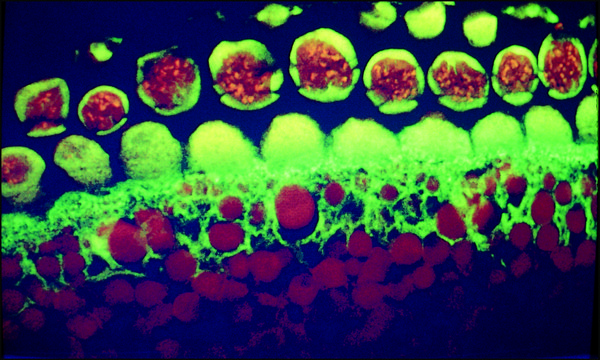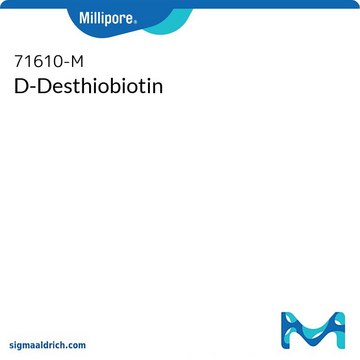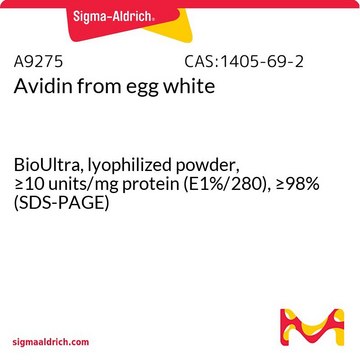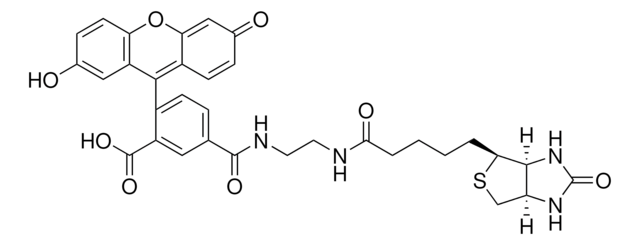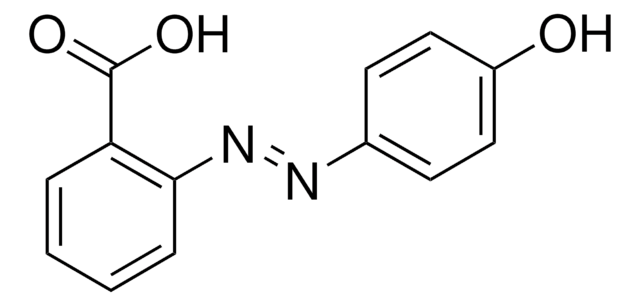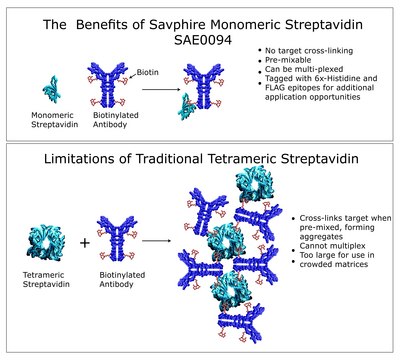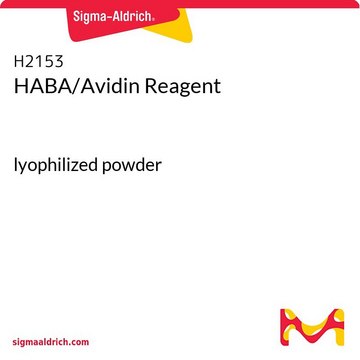所有图片(2)
About This Item
经验公式(希尔记法):
C10H17N3O2S
CAS号:
分子量:
243.33
Beilstein:
18952
MDL编号:
UNSPSC代码:
12352203
PubChem化学物质编号:
NACRES:
NA.46
推荐产品
生物来源
synthetic (organic)
质量水平
方案
≥98% (TLC)
表单
powder
溶解性
1 M HCl: 50 mg/mL, clear, colorless
储存温度
2-8°C
SMILES字符串
[H][C@]12CS[C@@H](CCCCC(O)=O)[C@@]1([H])NC(=N)N2
InChI
1S/C10H17N3O2S/c11-10-12-6-5-16-7(9(6)13-10)3-1-2-4-8(14)15/h6-7,9H,1-5H2,(H,14,15)(H3,11,12,13)/t6-,7-,9-/m0/s1
InChI key
WWVANQJRLPIHNS-ZKWXMUAHSA-N
正在寻找类似产品? 访问 产品对比指南
一般描述
2-亚氨基生物素是生物素的环状胍基类似物,在高 pH (> 9) 下对亲和素具有高亲和力,在低 pH (< 6) 下具有低亲和力。亚氨基生物素化的蛋白质选择性地包含在 pH 9-11 的亲和素柱内,可在 pH 4 洗脱或加入生物素洗脱。该技术可用于研究细胞表面蛋白,通过标记和选择性地从完整的人红细胞表面回收高碘酸盐敏感的成分。2-亚氨基生物素通过其胍基可逆性抑制 NOS(一氧化氮合酶)。它抑制 NO 的生物合成,了解这类重要酶的结合位点相互作用可能很重要。NOS 氧化 L-精氨酸的胍基氮生成一氧化氮和 L-瓜氨酸。
应用
已将 2-亚氨基生物素用作竞争性抑制剂,与链霉亲和素的生物结合位点结合,以恢复荧光信号。
免责声明
除非我们的产品目录或产品附带的其他公司文档另有说明,否则我们的产品仅供研究使用,不得用于任何其他目的,包括但不限于未经授权的商业用途、体外诊断用途、离体或体内治疗用途或任何类型的消费或应用于人类或动物。
储存分类代码
11 - Combustible Solids
WGK
WGK 3
闪点(°F)
Not applicable
闪点(°C)
Not applicable
个人防护装备
Eyeshields, Gloves, type N95 (US)
历史批次信息供参考:
分析证书(COA)
Lot/Batch Number
Hiroyuki Inoue et al.
Langmuir : the ACS journal of surfaces and colloids, 21(18), 8354-8359 (2005-08-24)
Layered thin films composed of avidin and 2-iminobiotin-labeled poly(ethyleneimine) (ib-PEI) were prepared by a layer-by-layer deposition of avidin and ib-PEI on a solid surface, and the disintegration induced by changing environmental pH and adding biotin in the solution was studied.
F Garret-Flaudy et al.
Biotechnology and bioengineering, 71(3), 223-234 (2001-04-06)
Affinity precipitation, especially secondary effect affinity precipitation, has repeatedly been suggested as a valuable technique for the biotechnical downstream process. The present lack of applications is related to the scarcity of predictable affinity macroligands and to the fact that rather
J Clarkson et al.
Biopolymers, 62(6), 307-314 (2002-02-22)
UV resonance Raman (UVRR) spectroscopy is used to study the binding of biotin and 2-iminobiotin by streptavidin, and the results are compared to those previously obtained from the avidin-biotin complex and new data from the avidin-2-iminobiotin complex. UVRR difference spectroscopy
Cacha Peeters-Scholte et al.
Experimental brain research, 147(2), 200-208 (2002-11-01)
The purpose of this study was to investigate whether combined inhibition of neuronal and inducible nitric oxide synthase (NOS) by 2-iminobiotin, free radical scavenging by allopurinol, and non-protein-bound iron chelation with deferoxamine improved cerebral oxygenation, electrocortical brain activity, and brain
Cora H A Nijboer et al.
Journal of cerebral blood flow and metabolism : official journal of the International Society of Cerebral Blood Flow and Metabolism, 27(2), 282-292 (2006-06-01)
We have shown earlier that 2-iminobiotin (2-IB) reduces hypoxia-ischemia (HI)-induced brain damage in neonatal rats, and presumed that inhibition of nitric oxide synthases (NOS) was the underlying mechanism. We now investigated the effect of 2-IB treatment in P7 rat pups
我们的科学家团队拥有各种研究领域经验,包括生命科学、材料科学、化学合成、色谱、分析及许多其他领域.
联系技术服务部门